
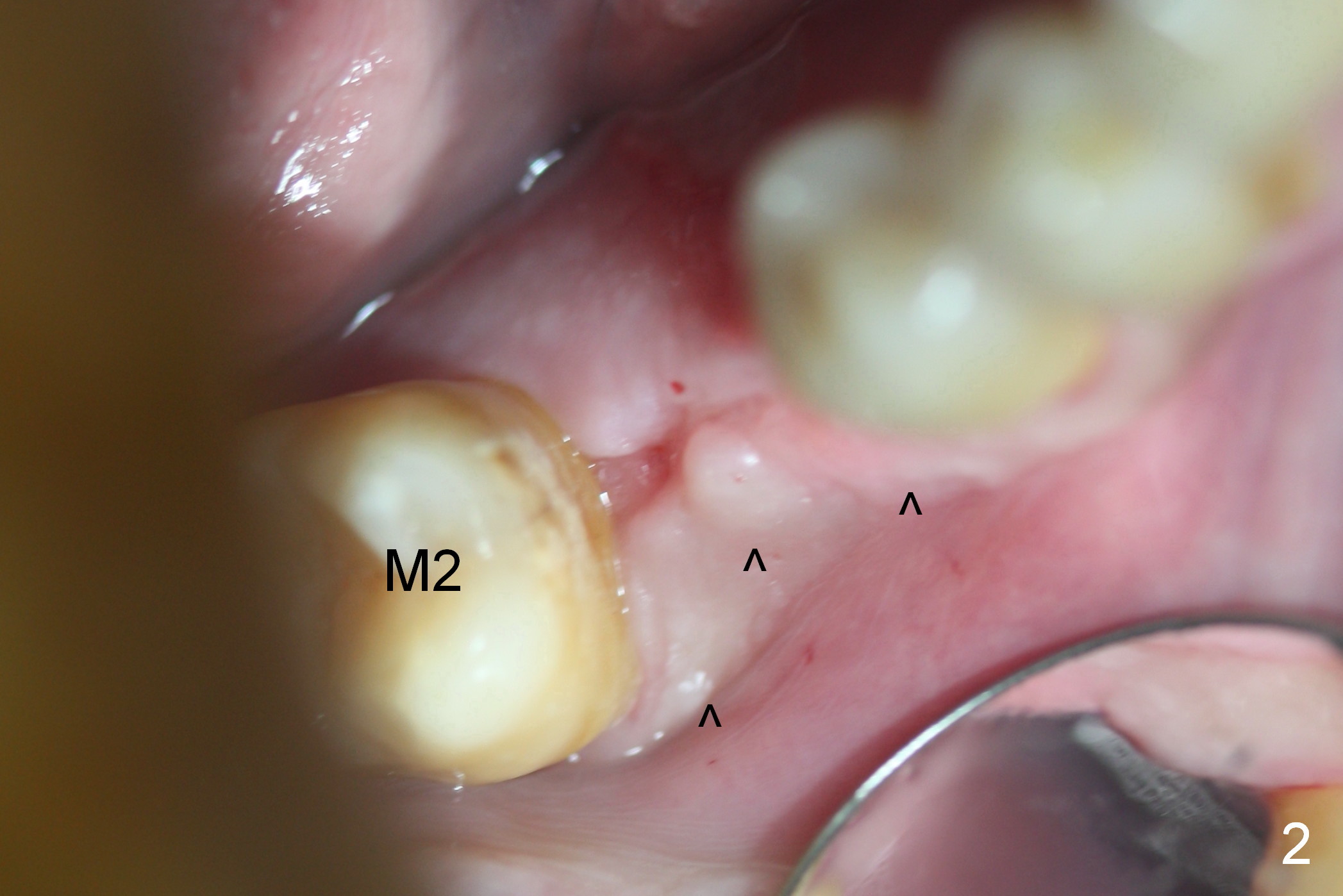
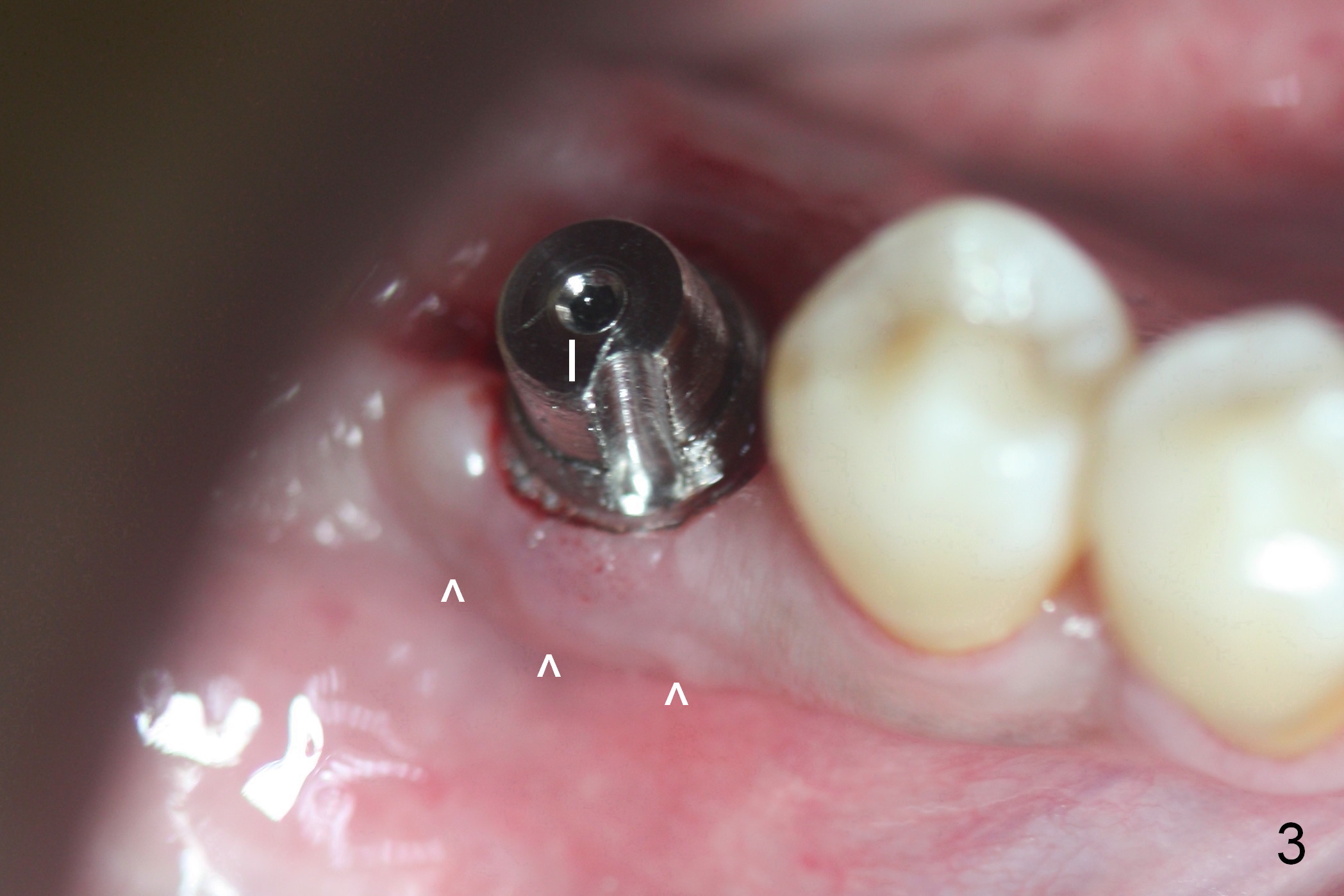
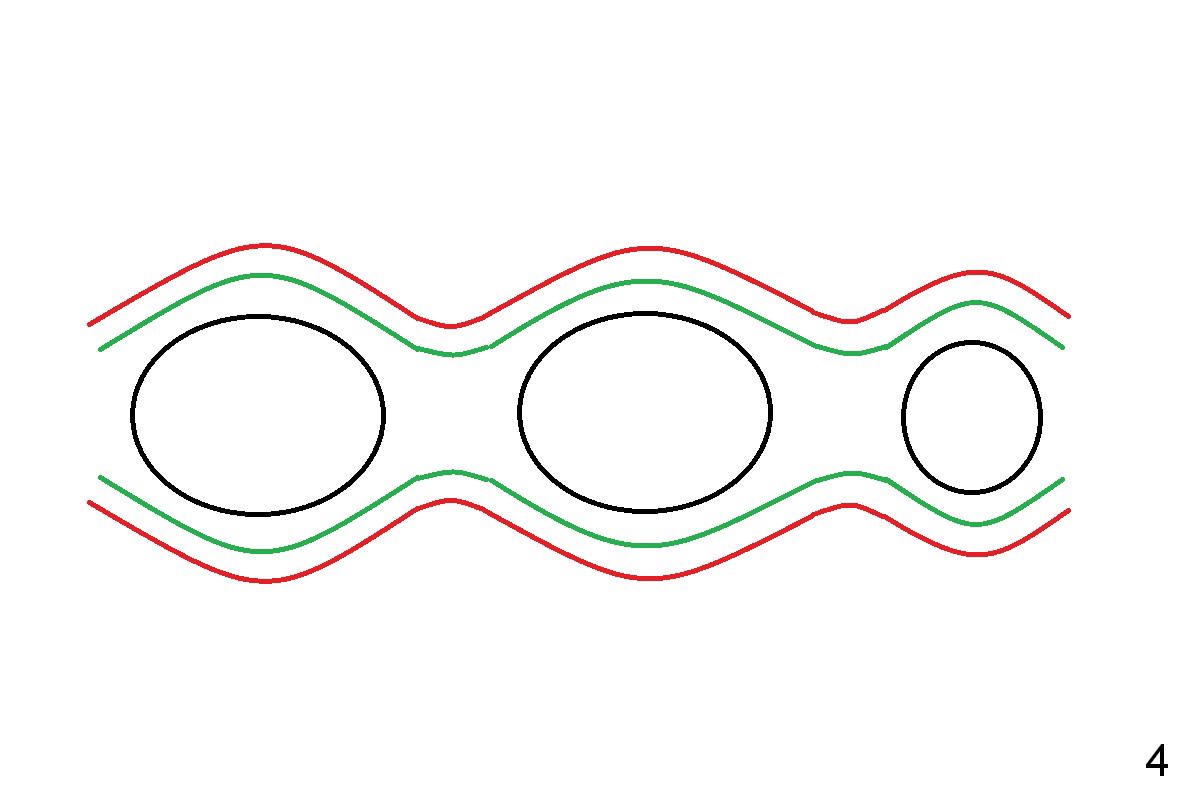
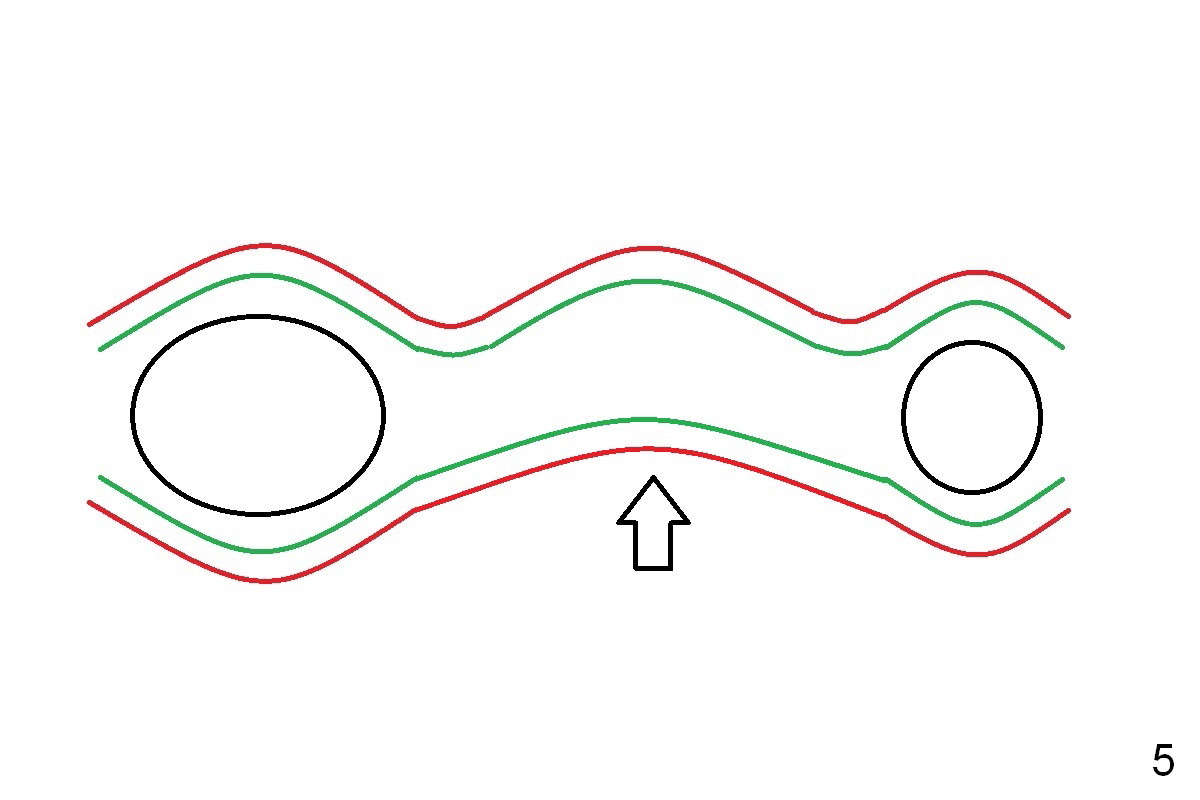
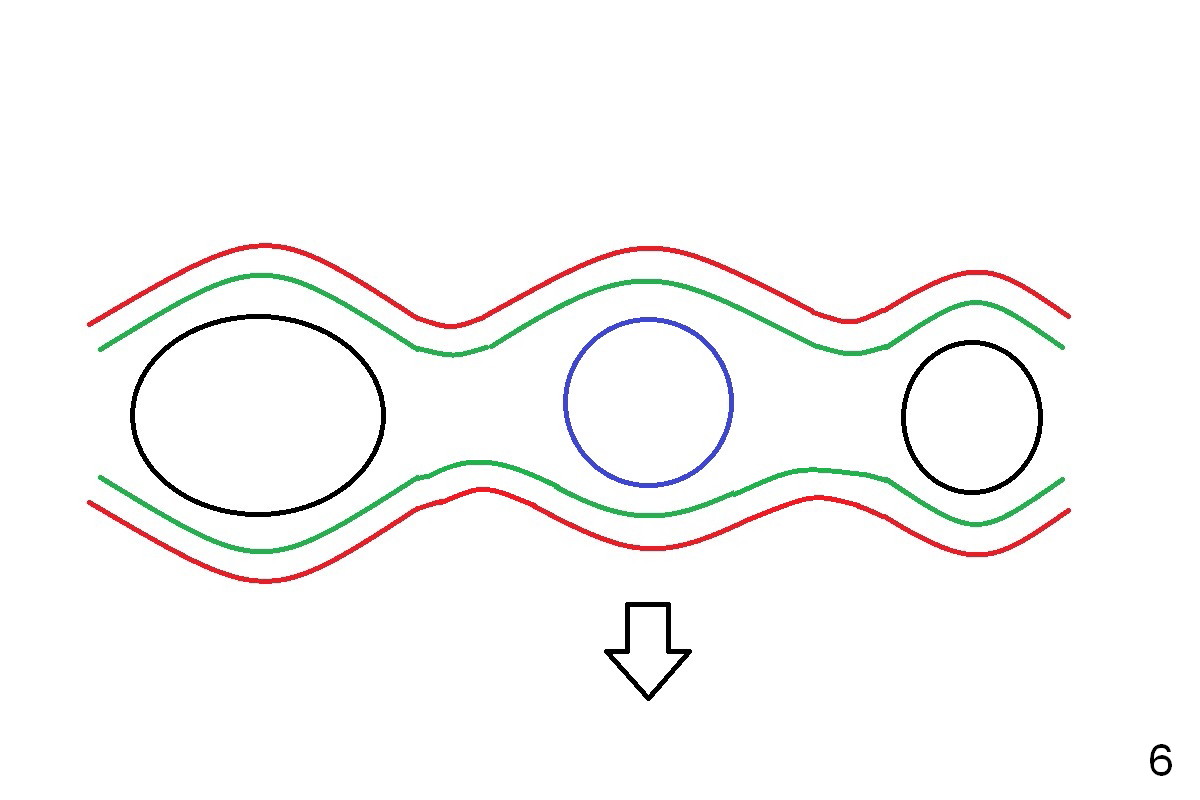
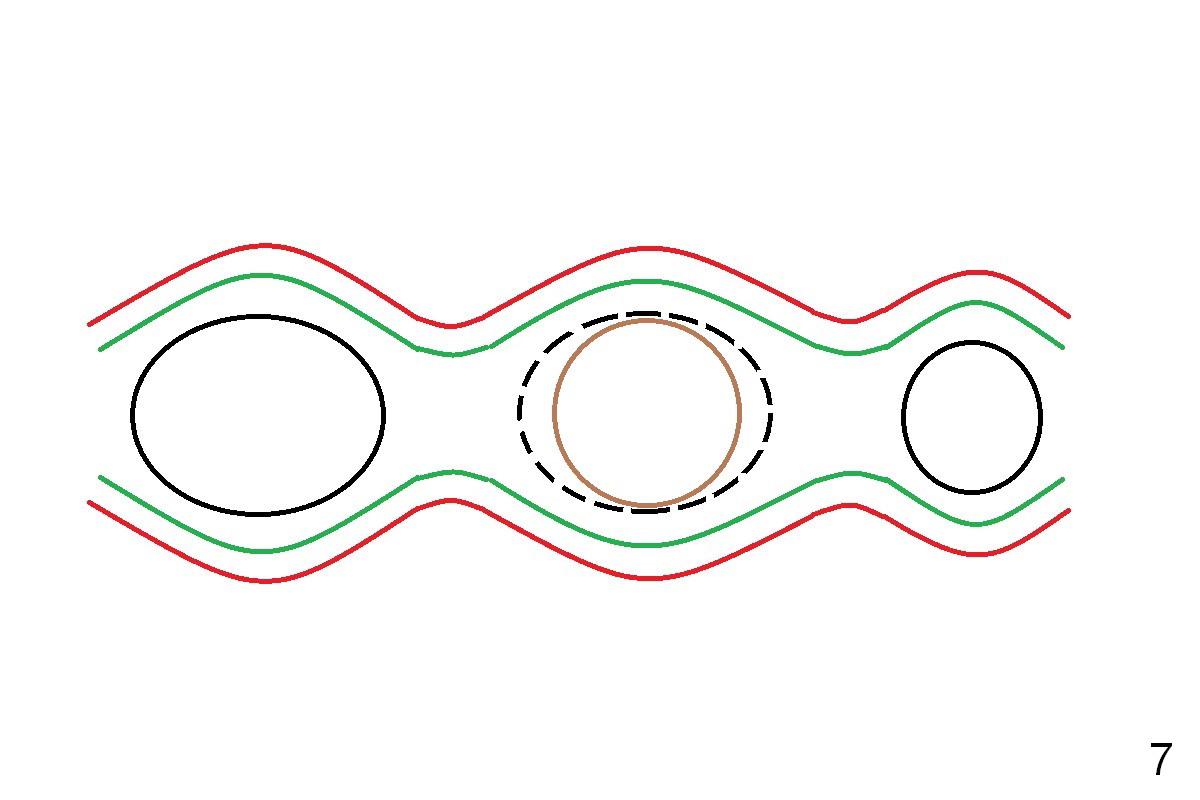
 |
||
 |
 |
 |
 |
 |
 |
What Happens when a Tooth is Taken Out?
Three months after lower right first molar extraction (Fig.1 M1), the socket looks empty on X-ray (*, as compared to M1 on the other side) and collapsed (concave) in the mouth (Fig.2 arrowheads). With careful manipulation, implant (Fig.3 I) placement partially restores the contour of the socket (arrowheads, convex).
When our teeth are in the sockets (Fig.4 black circles), the local bone (green waving lines) and gums (red lines) are sticking out. When the middle tooth is extracted, the corresponding bone and gums on the bottom are quickly becoming soft and collapsing (Fig.5 arrow, Fig.2 arrowheads). If you get an early (~3 months after extraction in stead of several years) dental implant (Fig.6 blue circle), the collapsing bone and gums can be partially restored (Fig.6 arrow, Fig.3 arrowheads). Most ideally, an implant should be placed (Fig.7 brown circle) immediately after extraction so that there will be no collapse and the surgery will be safer and quicker. Either a tooth or an implant can hold the bone and gums in place!
Return to Implant
Xin Wei, DDS, PhD, MS 1st edition 05/13/2016, last revision 05/14/2016